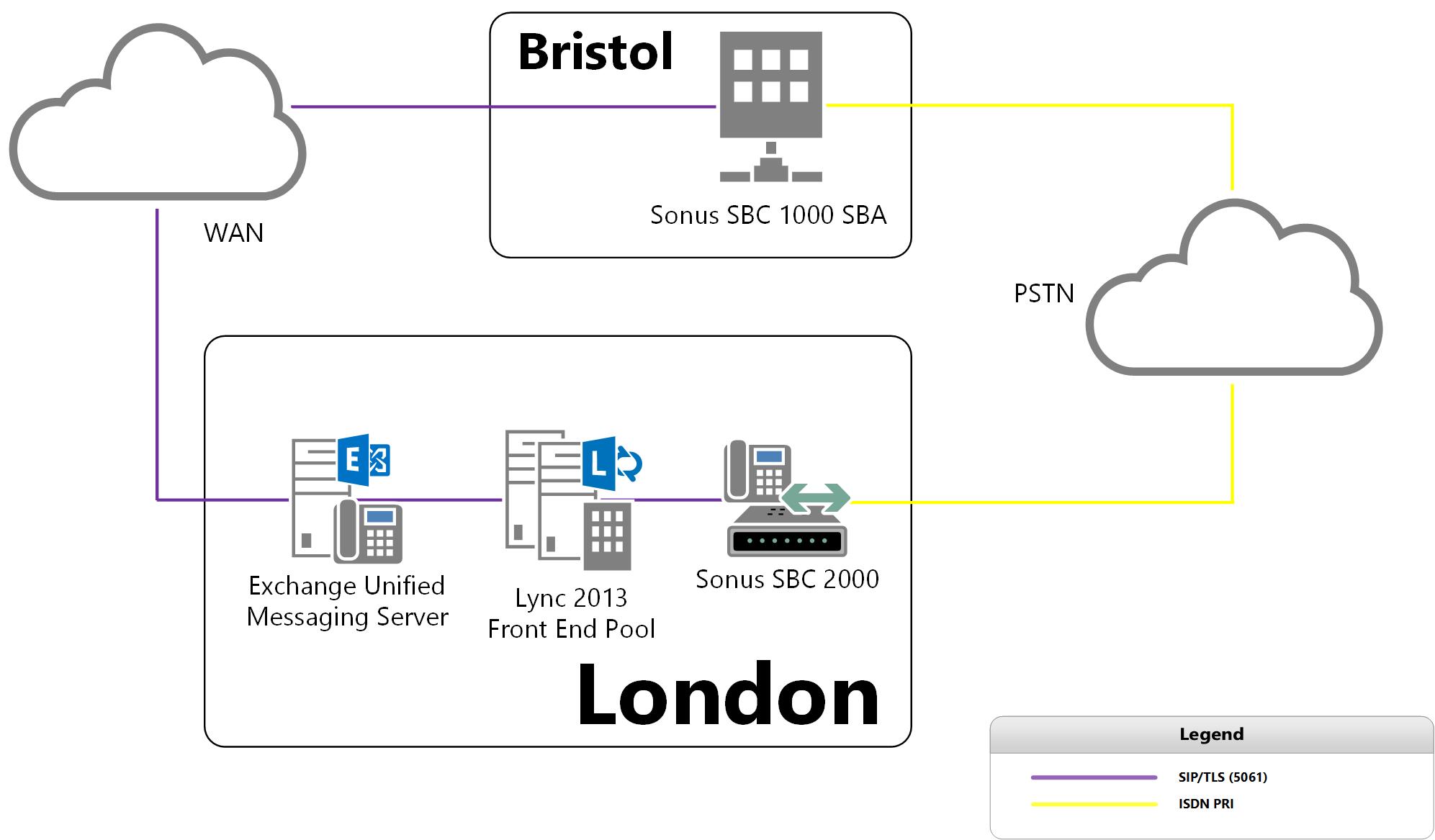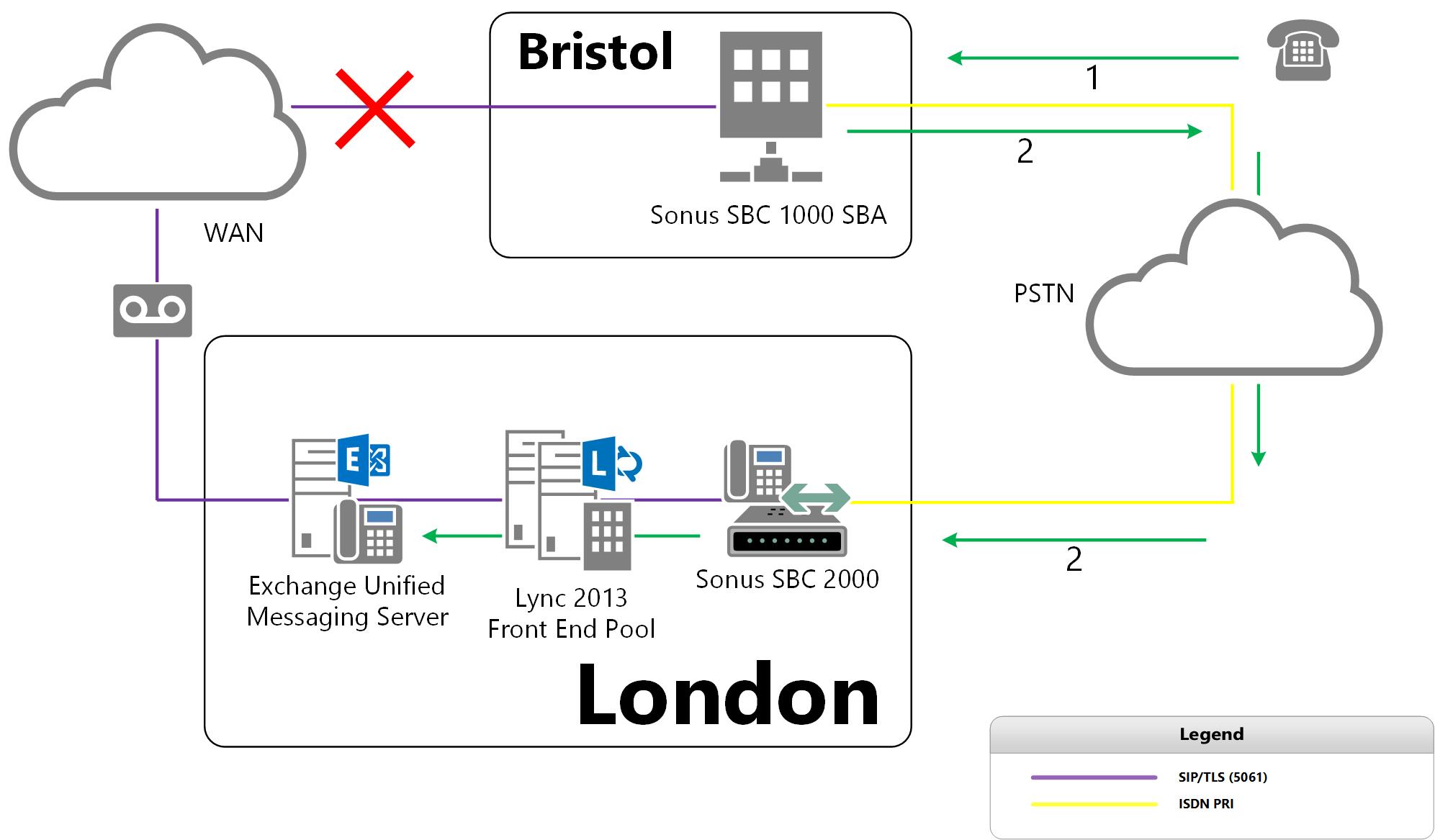Recently I was working on a customer’s global roll-out of Lync 2013 and we were designing how their branch sites would work from a voice perspective. Each branch site would have an SBA for voice connectivity to the legacy PBX/ISDN and for survivability, but we also had to map out how voice mail would work in the event of WAN failure.
Here’s how things would look like in a normal scenario with the WAN up:
With the Exchange Unified Messaging servers being in the central data centre along with the main Front End pool, this meant we needed to configure voice mail survivability. This is a feature Lync 2013 provides out of the box, but not one I knew a lot about or how to configure it. Outlined at the bottom of the TechNet Library article Branch-Site Resiliency Requirements, we can determine how Lync still provides voice mail deposit and retrieval in the event that the SBA cannot contact the central Exchange UM server/s.
How it works
The way this works is the SBA is aware of the UM servers being contactable or not through SIP OPTIONS based health checking. Lync registrars (Front End servers and SBAs) send these requests to other SIP servers (i.e. UM servers and SBCs) and expect a 200 OK response back to keep that peer marked as up. If the Lync registrar does not receive a 200 OK response back after a few requests, it will mark that server as unavailable and stop sending calls to it.
Once the SBA stops receiving 200 OKs back from UM, voice mail survivability via PSTN reroute kicks in and this scenario looks like this:
Voice Mail Deposit
Once the WAN is down and the SBA detects that it can’t get to UM, unanswered/ignored calls to SBA homed Lync users are no longer routed to UM over the WAN and are instead routed over the PSTN to the UM Auto Attendant (AA) number.
Once the call connects to the UM server via PSTN, the caller will be asked who they’re calling (either via speech or extension number) and can then leave a voicemail. In terms of caller experience, it is different to the native response, but it is an acceptable compromise when the infrastructure is in a degraded state.
Voice Mail Retrieval
When the WAN is down, users are still able to retrieve their voice mail by dialling the Subscriber Access number over the PSTN. Voice Mail Preview in the Phone tab won’t work in the Lync 2013 client, but when a user selects “Call Voice Mail”, Lync will place a call to the Subscriber Access number over the PSTN (rather than to the UM server over SIP like it normally would).
Once the call is connected, the UM server will see that the user is calling from their work number and will answer with the user’s name before asking them to enter their mailbox PIN to access their voice mail.
Configuration
Now that I’ve covered how this works conceptually, let’s look at how this is configured in Lync Server Management Shell:
First, I need to create a new voice mail re-routing configuration for the Lync branch site using the following cmdlet e.g.:
New-CsVoicemailReroutingConfiguration -Identity Site:Bristol
Once that’s created, I need to set the Exchange UM Auto Attendant and Subscriber Access numbers on the configuration and enable it with the following cmdlet e.g.:
Set-CsVoicemailReroutingConfiguration -Identity Site:Bristol -SubscriberAccessNumber “+442035001481” -AutoAttendantNumber “+442035001482″ -Enabled $true
Conclusion
Pretty straightforward huh? It’s easy to setup config wise, but this is good stuff to know to include in your branch office design and to communicate the expected behaviour to the business. Hope this helps!


Pingback: NeWay Technologies – Weekly Newsletter #72 – December 6, 2013 | NeWay